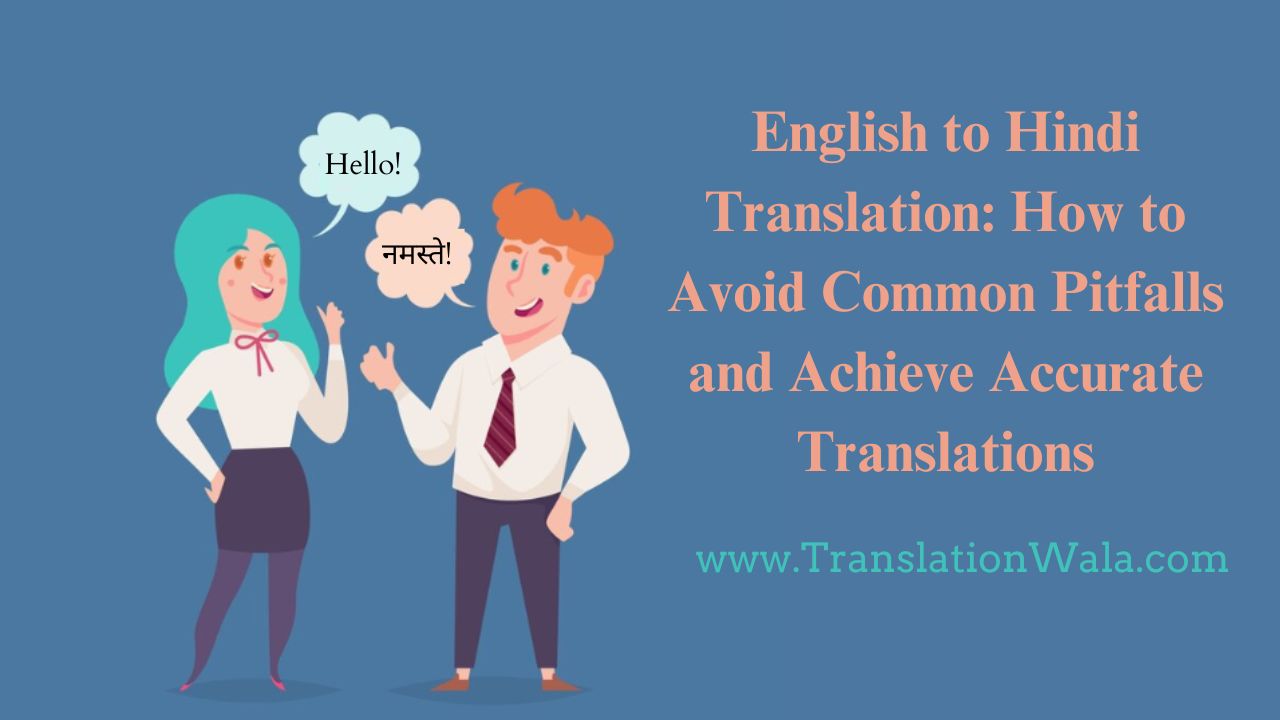English to Hindi translation is a crucial task that involves conveying the meaning and essence of a text from one language to another. However, this process is not without its challenges. Translators often encounter common pitfalls that can hinder the accuracy and effectiveness of their translations. In this article, we will explore some of these pitfalls and provide strategies to overcome them, ultimately leading to more accurate English to Hindi translation.
Understanding the Complexity of Translation
Translation is more than just substituting words from one language to another. It involves capturing the nuances of the source language and conveying them effectively in the target language while maintaining the intended meaning and tone. When translating from English to Hindi, translators must navigate differences in grammar, syntax, cultural context, and linguistic nuances.
Common Pitfalls in English to Hindi Translation
- Literal Translation: One common pitfall is the temptation to translate words and phrases literally without considering their cultural or contextual meaning. This approach can lead to awkward or nonsensical translations that fail to convey the intended message accurately.
- Idiomatic Expressions: English is replete with idiomatic expressions that may not have direct equivalents in Hindi. Translating these expressions word-for-word can result in confusion or misunderstanding. Translators must be adept at finding culturally appropriate equivalents or conveying the underlying meaning in a different way.
- Grammatical Differences: English and Hindi have different grammatical structures, particularly in terms of verb conjugation, sentence construction, and use of pronouns.
Translators must understand these differences to ensure grammatically correct and coherent translations. - Cultural Sensitivity: Cultural nuances play a significant role in language use and communication. Translators must be mindful of cultural differences between English-speaking and Hindi-speaking audiences to avoid inadvertently causing offense or misunderstanding.
Also Read: Unraveling Language: The Essence of English to Telugu Translation
Strategies for Accurate Translation
- Contextual Understanding: Before beginning the translation process, it is essential to thoroughly understand the context and intent of the source text. This includes identifying the target audience, purpose of the translation, and any cultural or linguistic nuances that may affect the translation.
- Research and Reference: Translators should make use of bilingual dictionaries, glossaries, and other reference materials to find suitable translations for words and expressions. Online resources and translation tools can also be helpful, but they should be used judiciously and verified for accuracy.
- Adaptation and Localization: Instead of aiming for literal translation, translators should focus on conveying the meaning and essence of the text in a way that is natural and culturally relevant to the target audience. This may involve adapting idiomatic expressions, restructuring sentences, or using alternative words to convey the intended message effectively.
- Revision and Proofreading: Once the translation is complete, it is crucial to review and revise the text for accuracy, clarity, and coherence. Proofreading by a second language expert can help identify any errors or inconsistencies that may have been overlooked.
The Role of Technology in Translation
Technology has revolutionized the field of translation, offering tools and resources that can aid translators in their work. Machine translation algorithms, such as those used by online translation, can provide initial translations that serve as a starting point for human translators. However, these tools are not foolproof and may produce inaccurate or nonsensical translations, especially for languages with complex grammar and syntax like Hindi.
Conclusion
English to Hindi translation requires careful attention to linguistic nuances, cultural context, and the use of appropriate translation strategies. By avoiding common pitfalls such as literal translation, idiomatic expressions, and grammatical differences, translators can achieve more accurate and effective translations that resonate with Hindi-speaking audiences. With the right approach and a commitment to quality, translators can bridge the language gap and facilitate communication between English and Hindi speakers.
